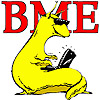
|
| SoE home |

|
| Kevin Karplus's home page |

|
| Biomolecular Engineering Department |
This is the US mirror for the swiss site http://www.expasy.org.
FSSP table 1 The tree of fssp files that covers the space of known folds. (local copy, not public)
Also, look at local copy of Table 2 which has a cross index of all the structural alignments in the FSSP database.
You can look at the abstract of the paper describing HSSP or get FTP access to the database itself.
EMBL's PredictProtein server provides automated searches of protein databases to predict aspects of protein secondary structure. PP performs a search of the SWISS-PROT database and performs iterative profile-based multiple alignments of the search results using "a standard dynamic programming method." The PROSITE and ProDom databases are used to identify biologically significant sites, patterns, and homology, plus results from a system of programs (PHDsec) that predicts the protein's secondary structure, solvent accessibility, transmembrane helices, and coiled-coil regions (using COILS). You can also request fold recognition by prediction-based threading using a method similar to that used by the UCLA-DOE structure prediction server.
PhD (part of the suite) was the best secondary-structure predictor available (until CASP3, when PSIPRED beat it handily, though newer versions of PhD are comparable ot PSIPRED). Here is a paper on PhD: PHD: 1D protein structure prediction (Rost)
The MBUG home page contains pointers to resources intended for people with interests in DNA and protein sequence analysis, particularly for beginners who already have some experience of searching on the Web.
Lots of people need explanations of the "a2m" alignment format (a variant of the FASTA sequence format). We have that pulled out into a separate page at http://www.soe.ucsc.edu/research/compbio/a2m-desc.html
| targets/domains | rank (using 1st model) | rank (best of 5 models) |
| All 87 | 8 | 6 |
| 25 CM easy | 21 | 4 |
| 18 CM hard | 9 | 6 |
| 19 FR/H | 10 | 12 |
| 15 FR/A | 7 | 7 |
| 10 NF | 2 | 6 |
Our old SAM-T02 server did not do as well:
| targets/domains | rank (using 1st model) | rank (best of 5 models) |
| All 87 | 69 | 56 |
| 25 CM easy | 59 | 62 |
| 18 CM hard | 48 | 43 |
| 19 FR/H | 64 | 59 |
| 15 FR/A | 113 | 96 |
| 10 NF | 122 | 93 |
The ancient (and now obsolete) SAM-T99 server did even worse:
| targets/domains | rank (using 1st model) | rank (best of 5 models) |
| All 87 | 102 | 104 |
| 25 CM easy | 88 | 80 |
| 18 CM hard | 72 | 74 |
| 19 FR/H | 120 | 121 |
| 15 FR/A | 155 | 153 |
| 10 NF | 144 | 139 |
Look particularly at the evaluation of the fold-recognition part of casp2. Our group is labelled "Karplus", which is a bit misleading, since Kimmen Sjolander had at least as much to do with the decisions for CASP2.
There is also considerable information about the project on the DOE website.
Outline of a proposed mechanism of protein folding. It uses Feynman rachets to model the mechanics of polypeptide formation, Fokker Planck equations to explain ATP hydrolysis and the Ising spin lattice model to analyse thermodynamic stability. The mathematical modelling uses the Yang Baxter relation in knot topology. A neural-network based algorithm is described to predict the 3D structure of a protein sequence in time O(n^2 + nlogn), but not implemented or tested.
|
|
|
UCSC Bioinformatics research |
Questions about page content should be directed to
Kevin Karplus
Biomolecular Engineering
University of California, Santa Cruz
Santa Cruz, CA 95064
USA
karplus@soe.ucsc.edu
1-831-459-4250
318 Physical Sciences Building